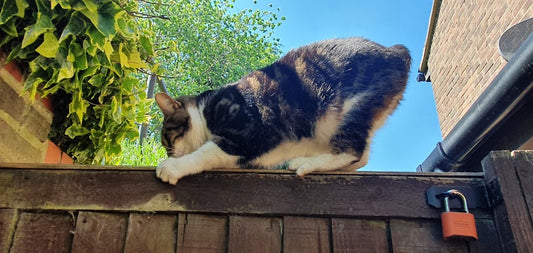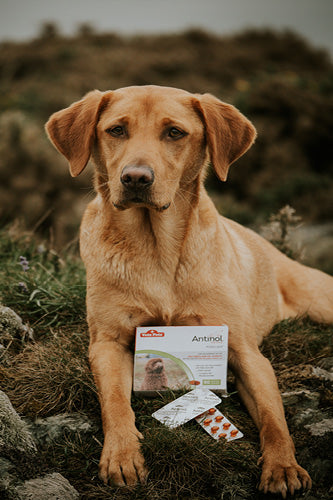
It’s heartwarming to know that our pint-sized pups could be with us for so long, but those extra years have their downside. These long-lived pooches are classed as geriatric for longer than a larger breed dog, and their joints will need extra support to carry them through those extra years.
But fear not! There are plenty of ways to keep your small dog mobile and support their joint health for many happy, active years.
1. Small dog joint supplements
The pet supplement industry is full of myths and over-exaggerated claims, making understanding which supplement is best for your small dog very difficult. Look for a joint supplement that is clinically proven, recommended by vets and contains high quality ingredients.
Regularly feeding a clinically proven joint supplement to your dog will support their long-term mobility and joint health. Keep those small dog zoomies going!
2. Aim for a healthy weight
Studies have shown that losing just 5% of bodyweight can have a huge impact on overweight dogs who need joint support.
Keeping your small dog at a healthy weight isn’t all about diets and restricted feeding (although they’re important). It can be fun for both of you!
Try these ideas to increase your dog’s activity levels and keep them moving.
Go On Adventures
- This is one of the most obvious ways of supporting your small dog's health and mobility, but according to the PDSA’s most recent PAW report, there is still a small percentage of dogs who are never walked or only walked once a week. Even if your dog is slowing down, getting out for a short time is beneficial. If you would like to increase the length of time you walk with your dog, do so gradually over a few weeks, and avoid walking after a meal or when it’s hot.
Scatter Feeding and Puzzle Feeders
- One of the easiest ways to increase your small dog’s activity is utilising puzzle bowls and scatter feeding. This is not only good for increasing activity levels, helping your dog to lose weight — but it’s fun for your dog and will support their mental agility.
Obstacle Courses
- Lying items like broom handles on the floor for your dog to step over increases the range of motion of your dog's joints beyond what they would normally perform during the day. This keeps them fit and stretches their limbs, creating a greater range of movement in the joints.
3. Professional and Home Rehabilitation Therapy
Who doesn’t love a massage? Even your dog will enjoy a bit of pampering, and therapy is incredibly effective at supporting and maintaining your dog’s mobility. We recommend you seek professional support from a qualified therapist, but there are exercises you can do at home with your dog. (Always check with your veterinary or rehabilitation team to ensure these exercises are suitable for your dog.)
Stretches
- Static stretches can help loosen up your small dog. Like any new exercise or training, make sure you use a tasty treat and start small, building up to stretching over longer periods of time. If your dog shows any signs of discomfort or unwillingness to continue — stop and try again another day. Bicycling your dog’s limbs gently through a “passive range of motion” can help stretch out limbs gently whilst not extending them beyond a normal range of movement. Try these simple stretches at home.
Strengthening Exercises
- Get your dog to move from lying to sitting, standing and back again. Although simple, these exercises will help build strength in the movements that your dog relies on every day.
- If your dog struggles, you may need to assist in gently lifting under their abdomen to help them rise, being mindful of your dog’s comfort levels. Always have a tasty (but healthy) reward handy.
Professional Therapy
- Veterinary rehabilitation therapists support dogs throughout their lives. As your dog ages, therapists can utilise a vast array of techniques and tools to help your dog stay active.
- Read more about how a rehabilitation therapist can support your dog here.
Small dogs bring boundless energy and love into your home, and it’s heart-wrenching to see them slow down as they get older. But reaching those senior years doesn’t mean you can’t still have bags of fun together. With these tips, you and your mini-pooch can stay active and continue your adventure together.










